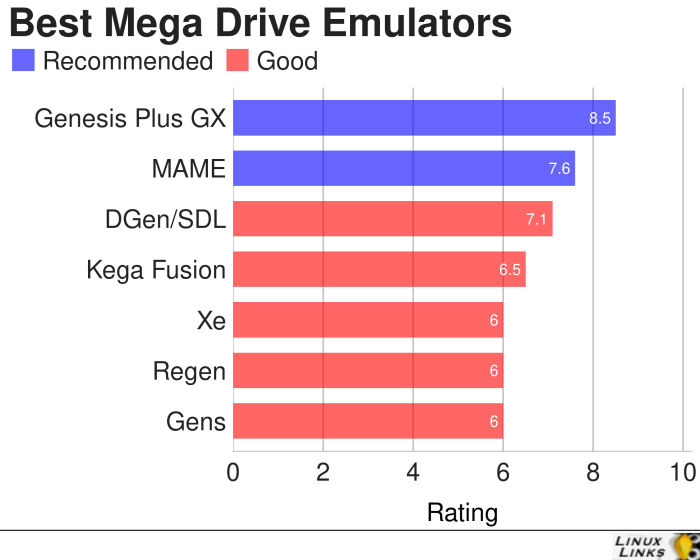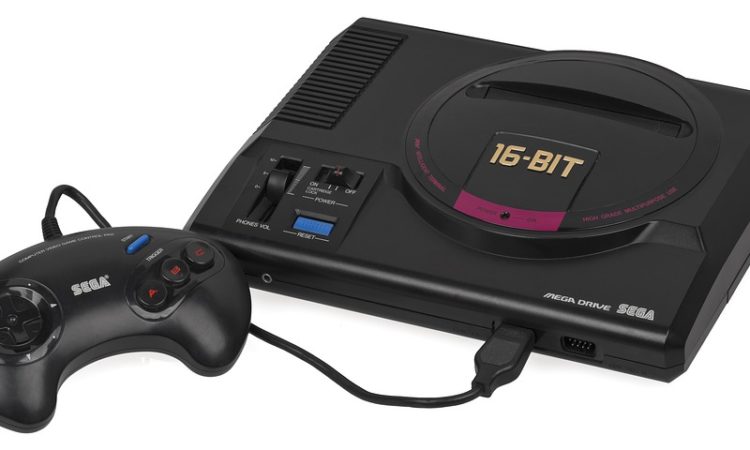Last Updated on February 12, 2019
The Sega Mega Drive (Sega Genesis) was a leading 16-bit video game console system. The console was developed by Sega Corporation in 1988. Sega was unable to obtain trademark rights in North America, and it was released in that market under the name of Sega Genesis.
By current console standards, the Mega Drive’s specification seem positively pedestrian. However, at its launch the console’s specifications surpassed competitors in many respects. At its core is a Motorola M6800 16 bit processor running at 7.67 MHz with a Zilog Z80 8-bit co-processor to handle sound. In the graphics department, the console offers a typical resolution of 320 x 224 pixels, with a 512 colour palette (up to 64 displayable at any one time), with up to 80 sprites. When released in Japan the console did not meet anticipated sales, but it was more popular in the North American and European markets. Demand for the Mega Drive took off with the release of the classic game, Sonic the Hedgehog.
The Sega Mega Drive spawned a number of variants including the a redesigned version of the console called Mega Drive 2. To maintain interest in the platform, Sega also released the Mega-CD (Sega CD in North America) which offered an improved specification over the original console and the ability to play audio CDs, as well as the video game console add-on, 32X, which was inserted into the system like a normal game cartridge.
Besides the Sonic series, the Mega Drive was particularly strong in the number of sports titles released, with EA Sports’ titles being especially popular. The console was discontinued in 1997.
To provide an insight into the quality of software that is available, we have compiled a list of 7 high quality Mega Drive emulators. Hopefully, there will be something of interest here for anyone who wants to relive their misspent youth.
The games are known as ROMs, reflecting that the media used a ROM cartridge. There are some Mega Drive ROMs which have been released in the public domain. However, the vast majority remain copyrighted, and the emulators below do not include any non-legal ROMs. Even if a user owns a legally purchased Mega Drive cartridge, this does not mean that using an emulator to play the game will be legal in a particular country.
Here’s our verdict for each emulator.

Now, let’s explore the 7 Mega Drive emulators at hand. For each title we have compiled its own portal page, a full description with an in-depth analysis of its features, together with links to relevant resources.
| Mega Drive Emulators | |
|---|---|
| Genesis Plus GX | Sega 8/16 bit emulator focused on accuracy and portability |
| MAME | Recreates the hardware of arcade game systems |
| Dgen/SDL | Virtual environment for the Mega Drive |
| Kega Fusion | Supports most of the Sega consoles including the Mega Drive |
| Xe | Multi System emulator supporting a large number of different systems |
| Regen | Emulator focusing on accuracy |
| Gens | Sega Mega Drive, MegaCD and 32X |
 Read our complete collection of recommended free and open source software. Our curated compilation covers all categories of software. Read our complete collection of recommended free and open source software. Our curated compilation covers all categories of software. Spotted a useful open source Linux program not covered on our site? Please let us know by completing this form. The software collection forms part of our series of informative articles for Linux enthusiasts. There are hundreds of in-depth reviews, open source alternatives to proprietary software from large corporations like Google, Microsoft, Apple, Adobe, IBM, Cisco, Oracle, and Autodesk. There are also fun things to try, hardware, free programming books and tutorials, and much more. |

Kega Fusion is the most download emulator according to Gamulator so I got it and it works pretty perfect.
Tried most of these on Manjaro linux (Arch-derived) and ended up with kega fusion. Gens gave me crackly audio on a Kabylake i5 laptop, and didn’t like no GUI for dgen (controller config is a pain) though it performed well.